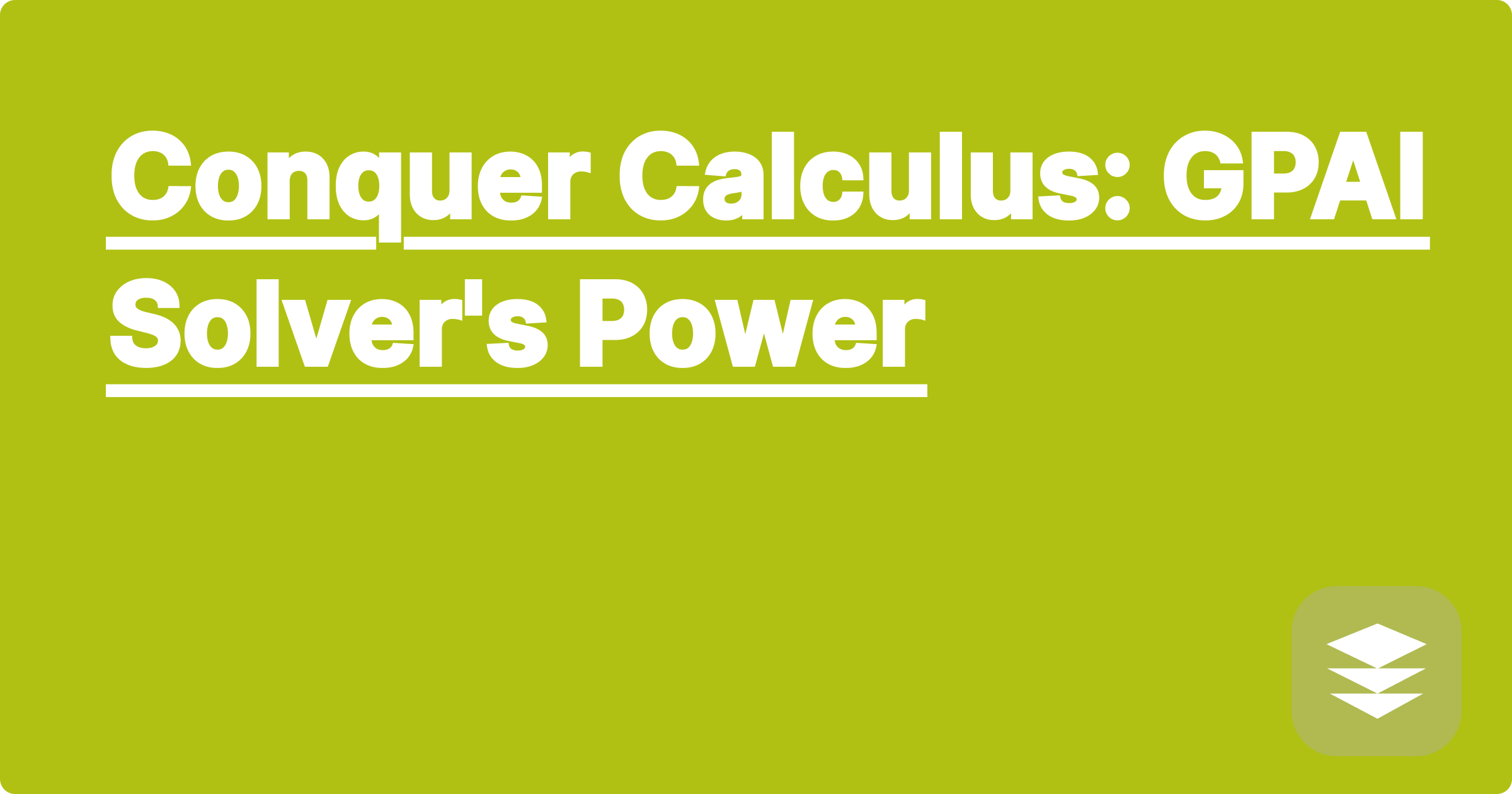
STEM fields often present complex challenges, and calculus is a significant hurdle for many students and researchers. The intricate nature of derivatives, integrals, and differential equations can be daunting. Fortunately, the rise of artificial intelligence offers powerful new tools to help conquer these mathematical obstacles. AI-powered solvers are emerging as game-changers, providing step-by-step solutions, visualizations, and conceptual explanations that can significantly enhance understanding and accelerate problem-solving.
For STEM students, mastering calculus is often crucial for success in various disciplines like engineering, physics, and computer science. A strong grasp of calculus unlocks advanced concepts and opens doors to specialized fields. Researchers also rely heavily on calculus for modeling complex systems, analyzing data, and developing innovative solutions. AI-powered tools can empower both students and researchers to tackle challenging calculus problems more efficiently, freeing up valuable time for deeper exploration and critical thinking. These tools are not meant to replace learning, but rather to supplement and enhance it, providing support and guidance when navigating complex mathematical landscapes.
Calculus, at its core, deals with the study of change. It encompasses two major branches: differential calculus, which focuses on instantaneous rates of change, and integral calculus, which deals with the accumulation of quantities. These concepts are fundamental to understanding a wide range of phenomena, from the motion of objects to the growth of populations. However, the abstract nature of calculus and the intricate rules involved can make it challenging to grasp. Students often struggle with applying formulas, visualizing concepts, and interpreting results. Researchers, while generally proficient in calculus, can also benefit from tools that streamline complex calculations and provide alternative approaches to problem-solving. The sheer volume of calculations required in some research areas can be overwhelming, and AI-powered solvers can help manage this complexity.
Several AI tools are revolutionizing the way we approach calculus. ChatGPT, for example, can provide step-by-step solutions to a wide range of calculus problems, explain underlying concepts, and even generate practice questions. Claude offers similar capabilities, with a focus on clear explanations and interactive learning. Wolfram Alpha excels at symbolic computation and can handle complex integrals, derivatives, and differential equations with ease. These tools leverage sophisticated algorithms and vast datasets to provide accurate and efficient solutions. By simply inputting the problem, users can receive detailed solutions, often accompanied by visualizations and alternative approaches. This allows for a deeper understanding of the problem-solving process and helps identify potential pitfalls.
Using these AI tools is generally straightforward. First, clearly define the problem you want to solve. This might involve writing out the equation, specifying the variables, and defining any constraints. Next, input the problem into the chosen AI tool, following the specific syntax and formatting required by the platform. For example, in Wolfram Alpha, you might enter "integrate x^2 from 0 to 1" to calculate the definite integral of x squared. Once the problem is entered, the AI tool will process the input and generate a solution. This solution will typically include the final answer, as well as intermediate steps and explanations. Carefully review the solution provided, paying attention to the logic and the steps involved. This is crucial for understanding the underlying concepts and applying them to similar problems in the future.
Consider the problem of finding the derivative of the function f(x) = x^3 + 2x^2 - 5x + 1. Using Wolfram Alpha, we can simply input "derivative of x^3 + 2x^2 - 5x + 1" to obtain the derivative, which is 3x^2 + 4x - 5. Another example involves calculating the area under a curve. Suppose we want to find the area under the curve y = x^2 from x = 0 to x = 2. Using an AI tool like ChatGPT, we can input the problem and receive a step-by-step solution using integration, showing the integral calculation and the final answer. These are just simple examples, and AI solvers can handle much more complex problems involving partial derivatives, multiple integrals, and differential equations. In research, these tools can be used to model complex physical phenomena, analyze large datasets, and optimize engineering designs.
While AI tools are powerful, they should be used strategically to maximize learning and avoid over-reliance. Focus on understanding the underlying concepts and the steps involved in the solution, rather than just copying the final answer. Use AI tools to check your work, explore alternative approaches, and gain a deeper understanding of the material. Practice regularly and challenge yourself with different types of problems. Don't hesitate to consult with professors or tutors if you encounter difficulties. AI tools should be seen as supplements to traditional learning methods, not replacements. By combining the power of AI with diligent study and critical thinking, you can significantly enhance your understanding of calculus and achieve academic success.
To effectively leverage the power of GPAI and similar solvers, begin by exploring the different platforms available and identifying the one that best suits your learning style and needs. Familiarize yourself with the specific syntax and input formats required by each tool. Practice using the tools on a variety of problems, starting with simpler examples and gradually increasing the complexity. Most importantly, remember that these tools are designed to enhance your learning, not replace it. Focus on understanding the underlying concepts and the problem-solving process, and use these tools as a valuable resource to support your academic journey. Integrating these tools into your study routine can significantly improve your understanding of calculus and contribute to your overall success in STEM.
GPAI: Ace Physics Homework Fast!
Chem Exam Prep: GPAI's Secret Weapon
Conquer Calculus: GPAI Solver's Power
GPAI: Master Organic Chemistry!
Engineering Data: GPAI's Analysis
GPAI: Your Linear Algebra Ally
GPAI: Conquer Your Stats Exams!